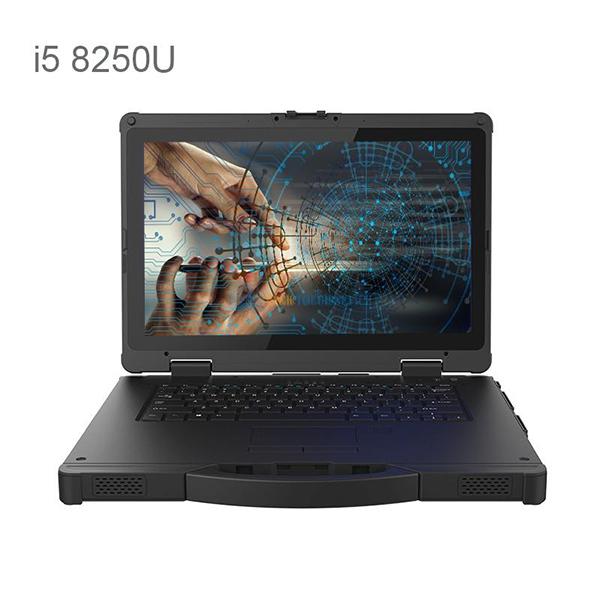Parameter Settings for RS485 bus communication of industrial control computers
RS485 Bus Communication Parameter Configuration for Industrial Control Computers
RS485 remains a dominant communication standard in industrial automation due to its robustness in noisy environments and support for multi-device networks. Proper parameter configuration ensures reliable data exchange between industrial control computers (ICCs) and field devices. Below are key considerations for optimizing RS485 communication settings.

Core Communication Parameters
Baud Rate Selection
The baud rate determines data transmission speed and must match all devices on the bus. Common industrial rates include 9600, 19200, 38400, and 115200 bps. Higher rates reduce transmission time but increase susceptibility to electrical noise over long distances. For example, a 115200 bps setting works well in short-distance (<100m) factory floors, while 9600 bps is preferable for long-distance (>1km) oil pipeline monitoring. Always verify device compatibility before implementation.
Data Frame Configuration
- Data Bits: Typically set to 8 bits for ASCII or binary protocols.
- Parity: Even or odd parity adds error detection but reduces effective throughput. No parity is common in modern systems using CRC checks.
- Stop Bits: 1 stop bit suffices for most applications, though 2 bits may improve reliability in electrically noisy environments.
A mismatch in these parameters causes communication failures. For instance, a device configured with 8N1 (8 data bits, no parity, 1 stop bit) cannot communicate with one set to 7E1 (7 data bits, even parity, 1 stop bit).
Flow Control Implementation
RS485 inherently lacks hardware flow control, requiring software-based solutions in high-speed networks:
- XON/XOFF: Software protocols that pause transmission when receiver buffers near capacity.
- Custom Protocols: Industrial controllers often implement application-layer flow control using status bytes in data frames.
In a packaging line case study, adding XON/XOFF reduced packet loss from 12% to 0.3% during peak data transmission periods.
Advanced Network Configuration
Addressing and Node Management
RS485 supports multi-drop networks with up to 32 devices (theoretical maximum varies by driver strength). Each device must have a unique address configured through:
- DIP Switches: Physical switches for basic address setting.
- Software Configuration: Advanced devices allow address programming via communication ports.
Address conflicts cause bus collisions. A pharmaceutical plant resolved intermittent communication failures by implementing a centralized address registry system that automatically detects duplicate addresses during network initialization.
Termination Resistor Placement
Proper termination minimizes signal reflections:
- Single-Master Systems: Place 120Ω resistors at both ends of the bus.
- Multi-Master Systems: Use adaptive termination or place resistors only at the farthest nodes.
In a water treatment facility, incorrect termination caused 15% packet error rates. Adding resistors at the correct locations reduced errors to below 0.5%.
Bus Length and Cable Selection
- Maximum Length: Theoretical limit is 1200m at 9600 bps, but practical limits depend on cable quality and noise levels.
- Cable Type: Twisted-pair shielded cable (STP) with proper grounding outperforms unshielded alternatives in electrically noisy environments.
A steel mill extended its RS485 network from 800m to 1000m by upgrading to STP cable and reducing baud rate from 19200 to 9600 bps, maintaining 99.9% communication reliability.
Troubleshooting and Optimization
Signal Quality Monitoring
Use oscilloscopes or protocol analyzers to verify:
- Voltage Levels: Differential signals should maintain >200mV amplitude.
- Rise/Fall Times: Sharp transitions (<1μs) prevent timing errors.
In a power plant control system, analyzing signal waveforms revealed excessive capacitance causing slow rise times. Adding series resistors improved signal integrity.
Grounding and Isolation
- Single-Point Grounding: Connect all device grounds at one bus location to prevent ground loops.
- Optical Isolation: Use isolated transceivers in environments with high common-mode voltages.
A chemical processing plant eliminated intermittent communication by isolating the RS485 interface from the control computer’s chassis ground.
Protocol-Specific Adjustments
- Modbus RTU: Ensure 3.5 character time gaps between frames.
- Custom Protocols: Adjust inter-frame spacing based on device processing capabilities.
In a automotive assembly line, tuning the Modbus RTU inter-frame delay from 1ms to 3.5ms resolved packet collisions during high-speed data exchanges.
Implementation Checklist
- Verify baud rate compatibility across all devices.
- Configure identical data frame settings (bits, parity, stop bits).
- Implement proper termination for the specific network topology.
- Select appropriate cable type and length for the environment.
- Establish reliable grounding and isolation where needed.
- Test communication under worst-case scenarios (maximum nodes, longest distance).
By following these guidelines, industrial control systems achieve RS485 communication with error rates below 0.1% in most applications, ensuring reliable operation of motor controllers, sensors, and actuators across diverse industrial environments.
Our company was founded in 2015 by a group of enthusiastic industrial hardware professionals who share a common passion for Iron Man Tony Stark. With their extensive theoretical knowledge and industry experience, the company was born out of a desire to create a high-tech product company in the computer hardware field, aiming to become the “Iron Man” of the computer industry. We specialize in OEM/ODM services, providing high-quality industrial computer production and research and development. Our product forms include touch display monitors, touch all-in-one machines, ruggedized tablets, various new-generation advertising machines, and specialized computers for harsh environmental applications. Our goal is to help customers achieve business value through innovative and high-quality products.Official website address:https://www.starktouchdevice.com/